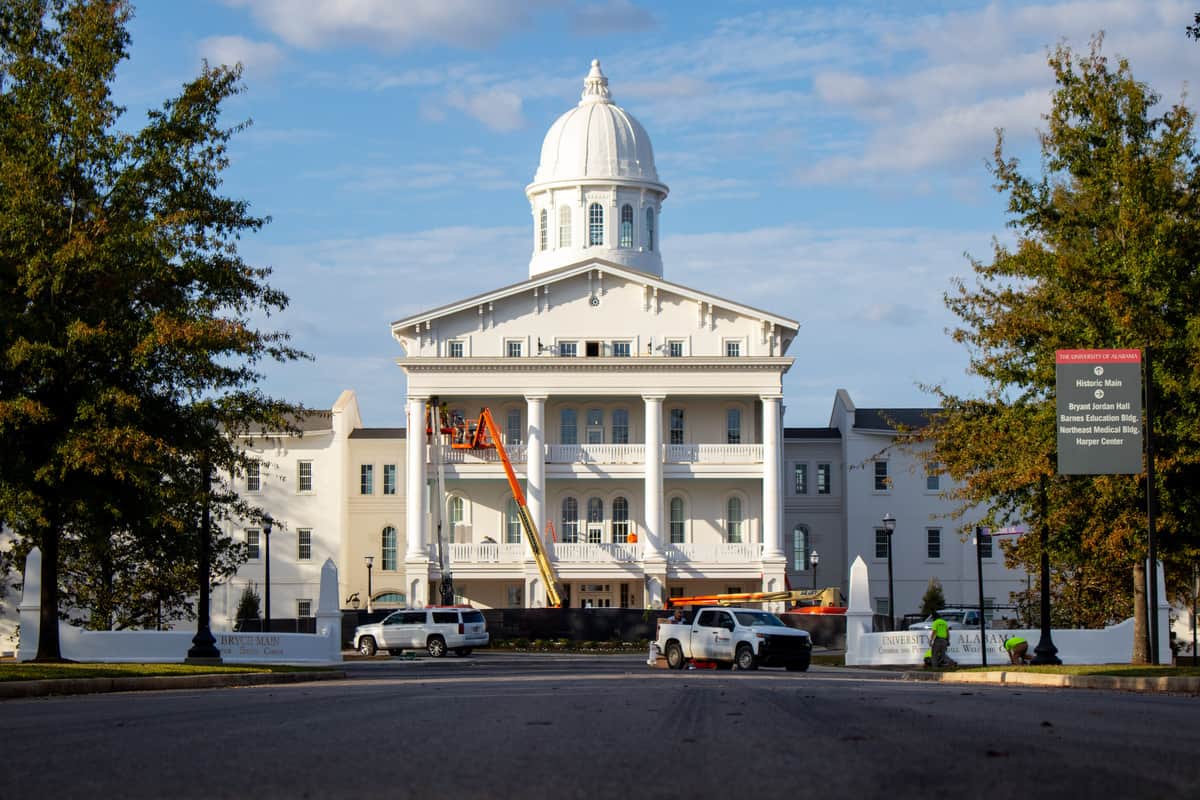Environmental issues are a recurring concern for Tuscaloosa community members, as seen in recent efforts to protect water quality and combat pollution in the Black Warrior River.
Although Alabama is widely recognized for its biodiversity, many of the state’s residents find that preserving and defending the natural landscape presents its own set of challenges.
Preserving early history
During much of Earth’s early history, Alabama was mostly ocean, but over time, fossils and other deposits layered and gave rise to extensive caves. As of 2007, Alabama had more than 4,200 discovered caves, according to the Alabama Cave Survey of 2007.
These fossils continue to inspire citizens to pursue paleontology to satisfy their curiosity about the past, including Jim Braswell, the president of the Alabama Paleontological Society, an organization dedicated to expanding and disseminating knowledge about Alabama’s fossils and natural history.
Braswell said he has been interested in fossils since he was a child. He attributes his interest to growing up in a family of rock collectors in northern Alabama, a region containing many Paleozoic fossils.
“I got to go looking for fossils … with my family, my older brothers, my father, and then I was just hooked,” Braswell said.
When he married, Braswell returned to his hobby of paleontology. He said he has an incredible time working with professionals and traveling the state in search of fossils.
“It’s just fun being out there,” Braswell said. “If you know what you’re kind of looking for, anybody can go out there and find something that’s absolutely new to science and make a huge discovery.”
When tectonic collisions created the supercontinent of Pangaea around 300 million years ago, they created the Appalachian Mountains, whose southern terminus makes up the Talladega ranges seen in northeast Alabama.
“Alabama is an amazing state,” Braswell said. “When you look at north Alabama, we have fossils covering the entire Paleozoic with the exception of the Permian period, and … just an incredible amount of fossiliferous rocks.”
Water flowing from the mountains helped carve Alabama’s landscape even more and even broke apart and deposited quartz along the modern-day coastline. This gave rise to Alabama’s white, sandy beaches.
Around 34 million to 35 million years ago, the southern portion of the state was flooded with water, making it a haven for aquatic life. This is where many fossils, including Basilosaurus cetoides, Alabama’s state fossil, were found. The Basilosaurus cetoides can be found at the Alabama Museum of Natural History on campus.
Conservation and defending wildlife
U.S. expansion during the 19th century disturbed ecosystems and created some concern for Alabama’s wildlife and natural landscape, which were greatly affected.
Over time, the U.S. government began setting aside land for conservation, including national parks and forests.
According to Matthew Capps, the deputy director of Alabama State Parks under the Alabama Department of Conservation and Natural Resources, the federal government granted states land to build national parks, but many of these projects were left unfinished when the United States entered World War II. These abandoned projects became state parks, with Cheaha Resort State Park being Alabama’s first.
Capps said the biodiversity of Alabama makes visiting the parks especially rewarding.
“Finding love with the natural resources we have available in Alabama, being one of the most diverse states in the country, and … they provide something for us to do and find new experiences every time we go out,” Capps said.
Despite Alabama citizens’ conservation efforts, including the 1935 formation of the Alabama Wildlife Federation, which sought to prevent the overhunting of wildlife, Alabama wildlife still faces challenges today.
Kevin Anson, the chief marine biologist at the Wildlife and Freshwater Fisheries Division in the Department of Conservation and Natural Resources, said one of the most challenging parts of conserving wildlife is communicating the meaning of the data and analytics the department provides as to why certain species are regulated.
“The biggest challenge is getting people on board, so to speak, or to reconcile maybe what they see in their interactions with particular species and what [changes in their access] management is coming forward with,” Anson said.
Anson said preserving wildlife habitats is an important part of conservation. Using freshwater fish as an example, he said a critical nexus in the ecosystem is estuaries, which are a habitat used by lots of different fish, crabs, shrimp and oysters.
Anson said these coastal estuaries, including in Mobile, are being affected by drought, limiting the amount of freshwater flowing into these fresh and saltwater mixes.
Anson said this drought is a possible impact of climate change, which can change how rainfall is distributed throughout the year.
“You’ll get rain, but it’ll be more infrequent, but when you get the rain, it will be heavier,” Anson said. “It also relates back to that issue of having a good balance of that fresh and saltwater to have a good salinity.”
Marianne Gauldin, the conservation outreach coordinator for the Alabama Wildlife and Freshwater Fisheries Division, said disturbing the habitats of certain wildlife forces creatures to relocate, adapt or die in response. She said this can be easy for animals like deer, coyotes and rabbits that can move around easily, but more difficult for amphibians and reptiles, which can have specialized needs.
“When their food source changes, or their habitat changes, they’re much more susceptible to population loss, because the moving and the adapting isn’t as easy for reptiles and amphibians as it is for some of the other species,” Gauldin said. “And so, unfortunately, that only leaves dying.”
Gauldin said she likes how her job teaches people how to appreciate and appropriately interact with Alabama’s wildlife and landscape, which was formed uniquely from hundreds of millions of years of change.
“From the Gulf Coast, all the way up to the foothills of the mountains, and everywhere in between there’s so many different habitats,” Gauldin said. “I think my favorite part of my job is kind of being a catalyst to help people understand the opportunities they have to take advantage of Alabama’s abundant natural resources.”













